Tamron 16-300 mm f/3.5-6.3 Di II VC PZD MACRO
3. Build quality and image stabilization
Despite the fact that the Tamron is bigger than its predecessor it doesn’t seem overly big when compared to other devices from this segment. For example the Nikkor 18-300 mm is almost as long as the Tamron, being a bit thicker and heavier at the same time. In the photo below the tested lens is positioned between the Zeiss Macro-Planar 2/50 and the Sigma A 1.4/35.
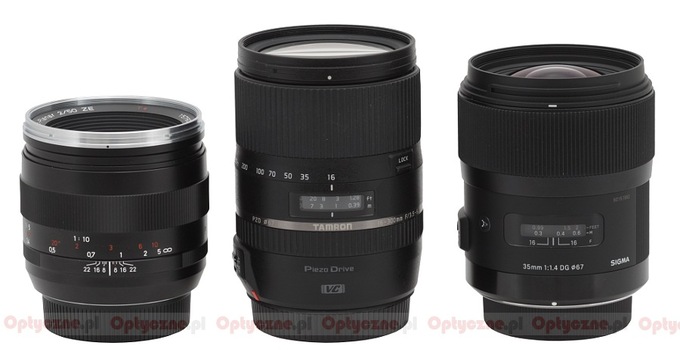 |
Please Support UsIf you enjoy our reviews and articles, and you want us to continue our work please, support our website by donating through PayPal. The funds are going to be used for paying our editorial team, renting servers, and equipping our testing studio; only that way we will be able to continue providing you interesting content for free. |
- - - - - - - - - - - - - - - - - - - - - - - - - - - - - - - - - - - - - - - - - - - - - - - -
The Tamron 16–300 mm f/3.5–6.3 Di II VC PZD MACRO starts with a metal mount surrounding a contact plate and a rear element, 20 mm in diameter. That element is positioned on the same level as the contacts with the focal length set at 16 mm. When you pass to 300 mm the rear element hides inside the barrel over 5 cm deep, revealing the inner part of the tube. Fortunately it is properly darkened although in some places you can still notice electronic parts so the construction can hardly be called tightly sealed.
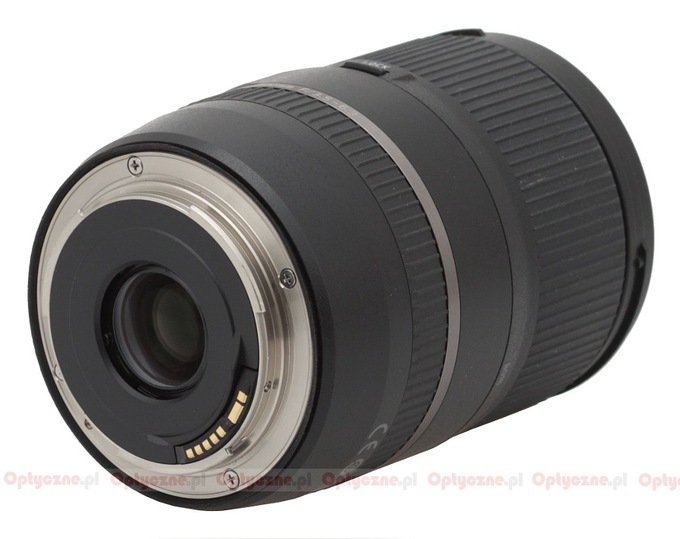 |
The proper lens starts with a smooth part of the barrel on which you can find a red square, making the alignment with a camera easier. Right next to that marking point there are focusing mechanism switches (AF/MF) and stabilization controls (VC ON/OFF). Looking at the lens from above you see inscriptions “Piezo Drive” and “VC”, meaning that the lens boasts a piezoelectric autofocus motor and an optical stabilization system.
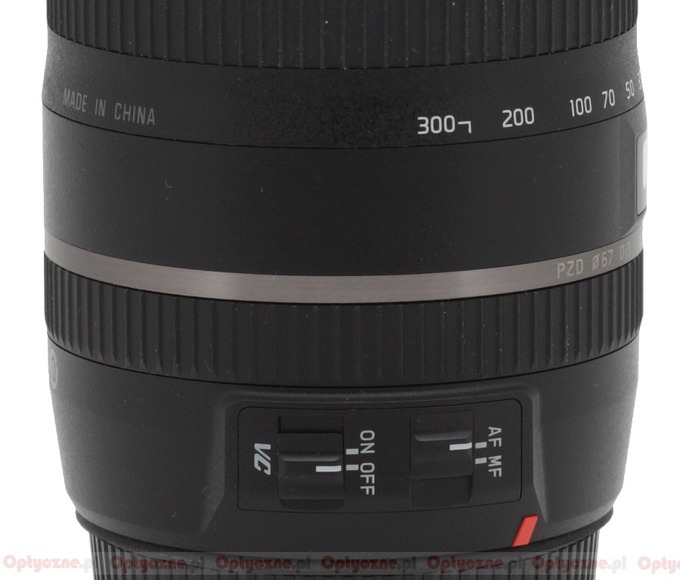 |
The next part is a ribbed and rubberized manual focus ring. It is as wide as 10 mm and, like in the case of all such constructions, its performance is just average. In this class of equipment you hardly ever use a manual mode of focusing and, as a result, the producers don’t exactly apply themselves to that task. Still the ring comes without any slacks, moves rather smoothly and running through the whole distance scale takes a turn through about 130-140 degrees.
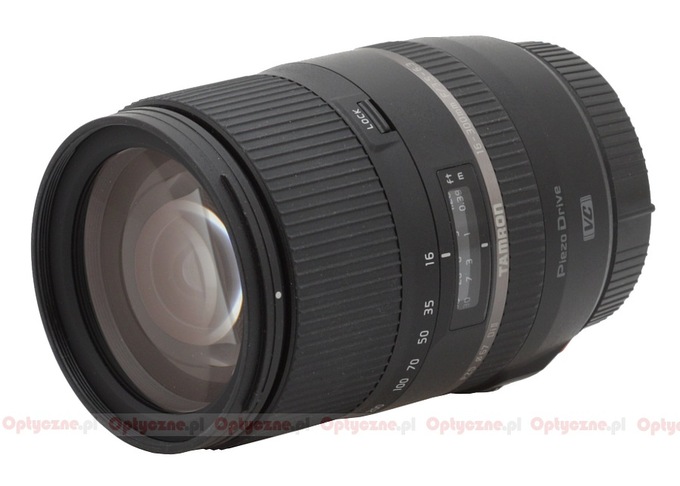 |
Further on you see a distance scale behind a window, expressed in feet and meters. The next part is an aperture ring, as wide as 38 mm; most of it is occupied by rubber ribs under which there is an inscription “Made in China” and focal lengths markings at 16, 35, 50, 70, 100, 200 and 300 mm. You can also find a “Lock” switch, used to block the lens at 16 mm focal length. Still we didn’t need to use it almost at all as there was no ‘zoom creep’ effect even if we shook the lens quite vigorously.
The aperture ring works with uneven resistance – smaller in a range of 16-35 and 200-300 mm and greater from 35 to 200 mm. As you move the ring the lens increases its physical dimensions because the front element extends on a telescopic tube. What’s interesting, the first part of that tube is made of metal and the second of plastics. Everything seems to be quite solid and pretty stable – you can see at once that you don’t deal here with cheap junk, featuring a lot of plastic.
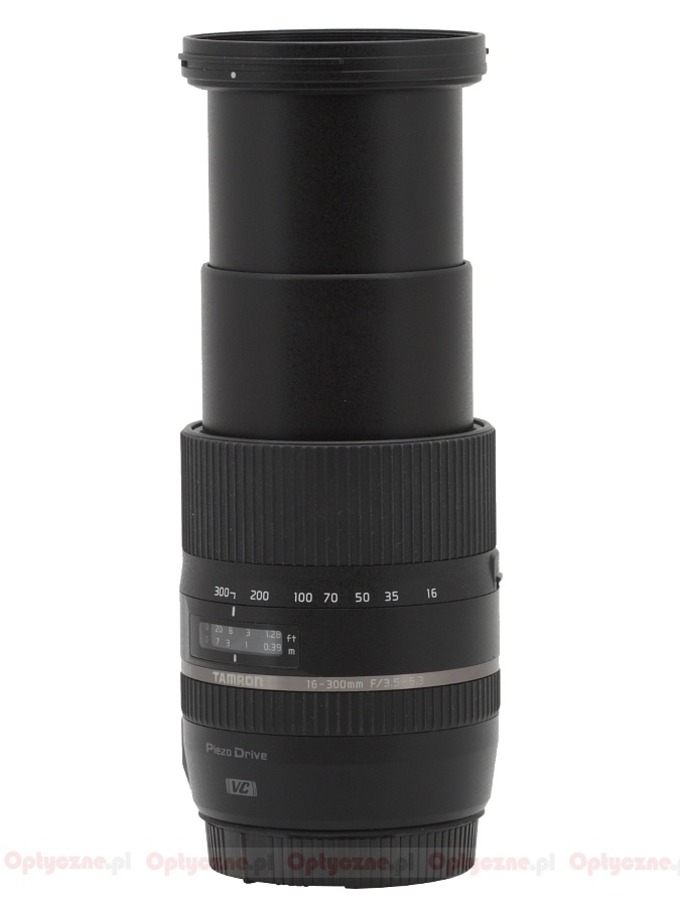 |
The lens ends with a hood mount which turns into a non-rotating filter thread, 67 mm in diameter, surrounding the front element of the lens which is 54 mm in diameter.
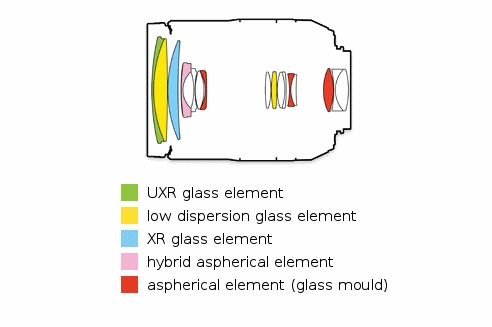 |
The Tamron 16–300 mm is designed to cooperate with APS-C/DX sensors and its inner construction features 16 elements positioned in 12 groups. The producer used a lot of special elements as well: among those 16, mentioned above, you can find 3 aspherical elements, 1 hybrid aspherical element, 2 elements made of low dispersion glass, 1 element made of XR glass (Extra Refractive Index) and one element made of UXR glass( Ultra-Extra Refractive Index). Additionally, you get an aperture with seven diaphragm blades which can be closed down to a value from f/22 to f/40, depending on the focal length you employ.
Buyers get both caps and a petal-shape hood in the accessory kit. The producer doesn’t add any case or pouch.
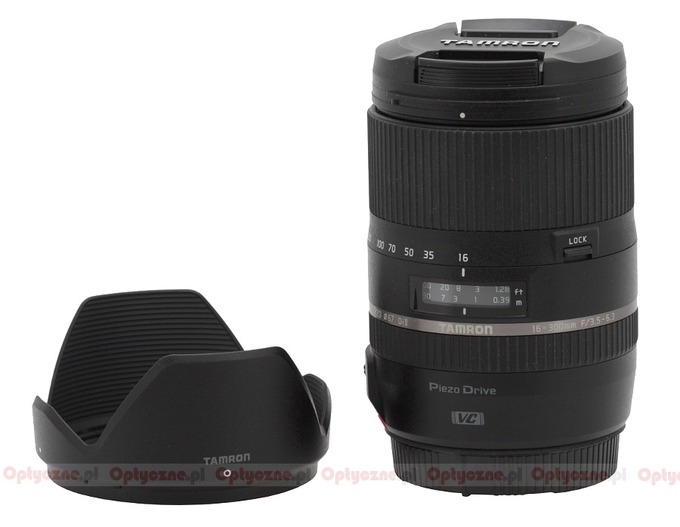 |
Optical stabilization
Our optical stabilization test was conducted at 300 mm focal length. For every exposition time, from 1/400 to 1/5 of a second, we took several dozen photos with the stabilization switched on and off. Then at each exposition time we determined a percentage of blurred photos and presented it as an EV function which you can find below. A value of 0 EV corresponds to 1/320 of a second.
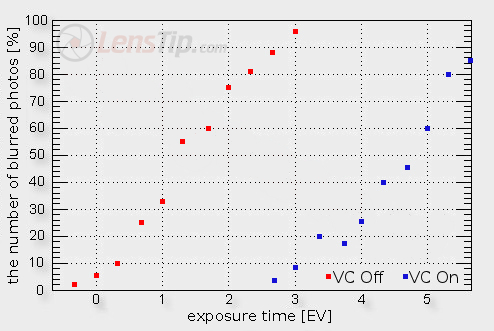
As you can see on the graph, the distance between both curves amounts to about 3.3 EV and such is the efficiency of this lens’s optical stabilization system. It is a very good result, guaranteeing comfortable work at the longer end of the focal range.






